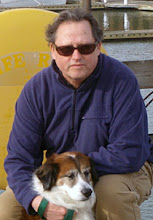Buy the dream and you will live forever. Betray its legacy and you will wither. Ignore your detractors and you will perish.
Protect your golden icons, drive cost from your business, promote, generate repeat sales against competitors, innovate, be transparent about what matters, and always look forward expressed in new products. Easy.
So what happened that a regulatory monopoly is now necessary? Is it just conceptional enemies or a self regulatory mobilization demanding relevance?
Lets look at the legacy and the internal and external markets that are served.
ELITES - This is the bonafide, artistic, critically acclaimed trend leaders whose work is expressed through limited, exclusive distribution. Master perfumers status and reputations are made using what nature, science and imagination can provide.
PREFERRED - These are avatars of the Elites, using more science and precision. Preferred products are intended to aspire, feed the frenzy, promote ubiquitous images/ memory and drive traffic to the dream. Supply is determined by privilege, give backs and performance.
OUTSIDERS - This is populated by technicians who satisfy real every day needs. Their art comes from existing available material sources, natural and synthetic, mid grade to technical qualities. Their products thrive in public health usages.
How will IFRA be effective serving these interests? Will they preserve the materials the Elites demand? Will IFRA's primary focus be on the EU Regulatory process and assign fiscal responsibilities in the global supply chain for the Preferred? IFRA already assumed January 1st the fragrance related regulatory functions and advisory initiatives of the European Flavour and Fragrance Association. Will IFRA personalize the transparency process for environmental science? Can IFRA inspire trust and leadership when prior self regulation tactics fostered a squeamishly incoherent anti-fragrance movement?
What is evident on the regulatory agenda are of course, educational forums. FMA just hosted a speech from Stats.org. RIFM will address this week how "Transparent Science Supports Brand Trust." And IFRA is grappling with population risk hazards vs quantitative assessments.
Upcoming in May will be a seminar hosted by EPA's DfE, and third party reviewers NSF, and ToxServices to guide Fragrance creators through the new DfE screen. This precedes the Sustainable Fragrances 2010 conference, which should be more progressive then 2009's program. Since the DfE screen should include environmental safety hazards, seminar attendance is critical, affordable and inexcusable.
[note: there have not been any press releases but excerpts from a recent interview in Perfumers & Flavorist magazine. I doubt the quotes were entirely on message.]
Sunday, February 7, 2010
Subscribe to:
Posts (Atom)




